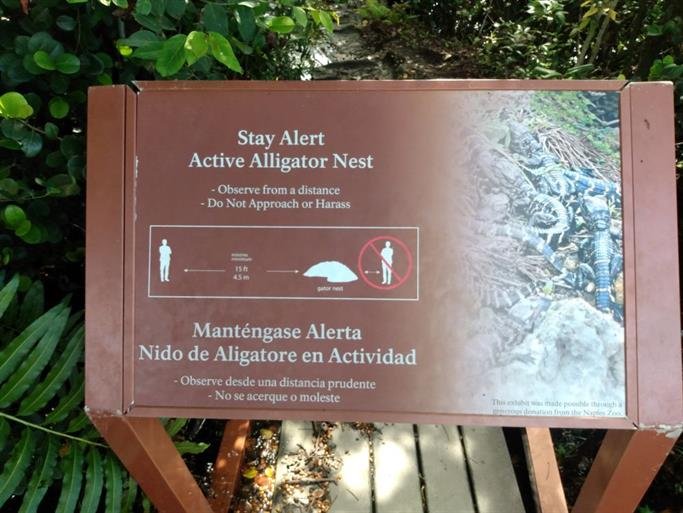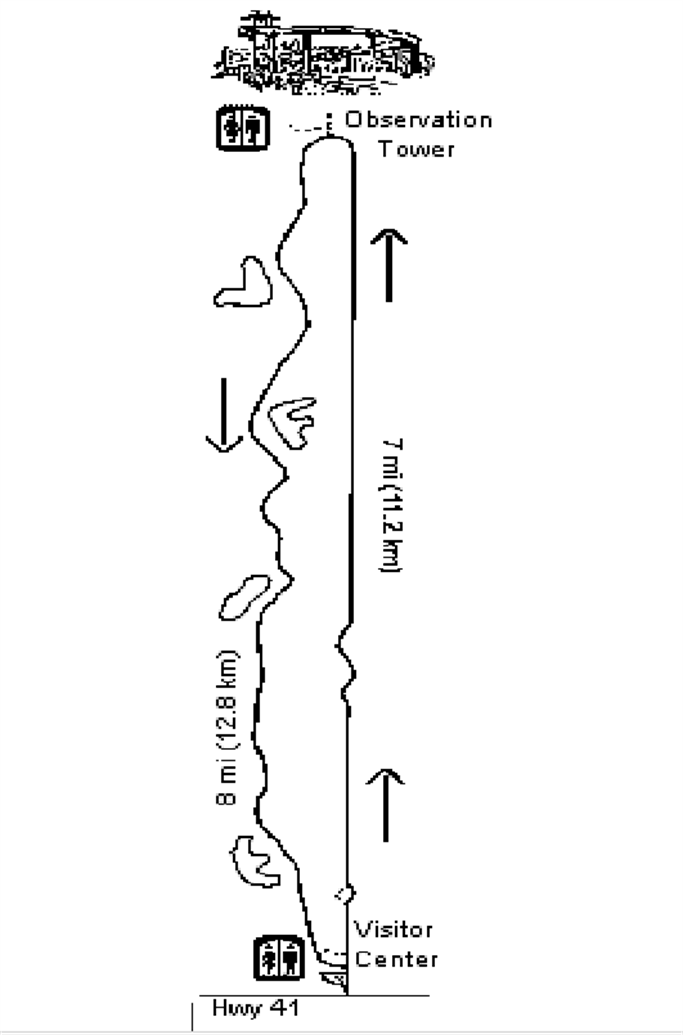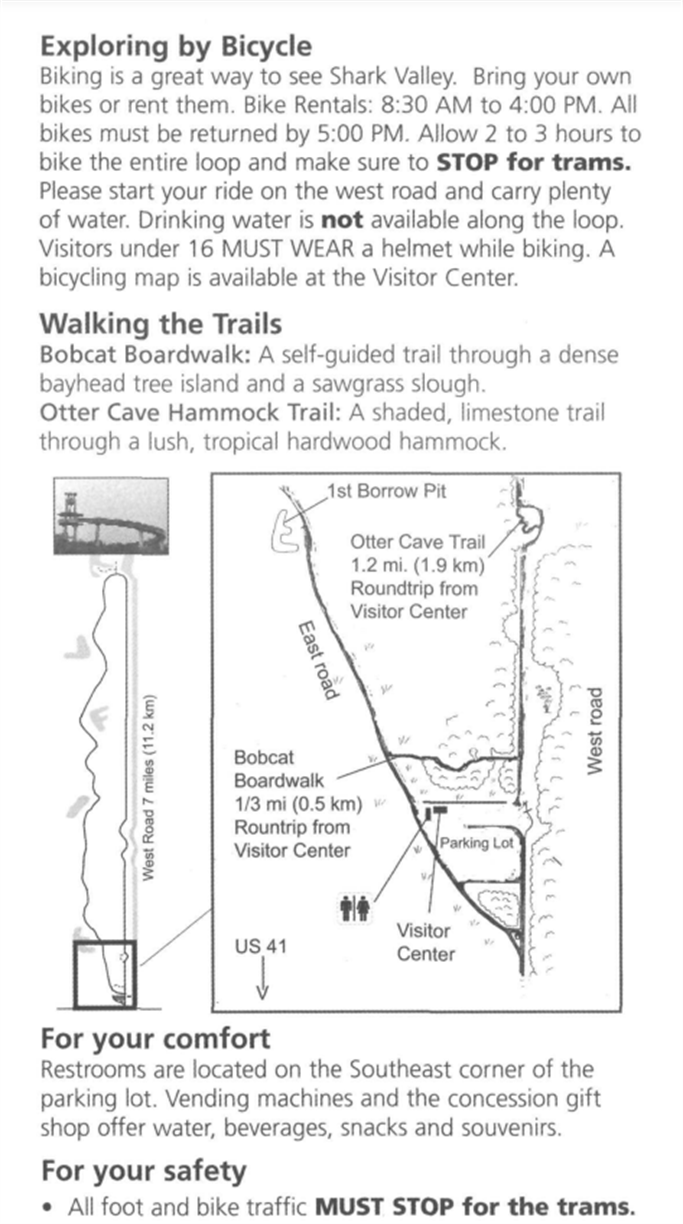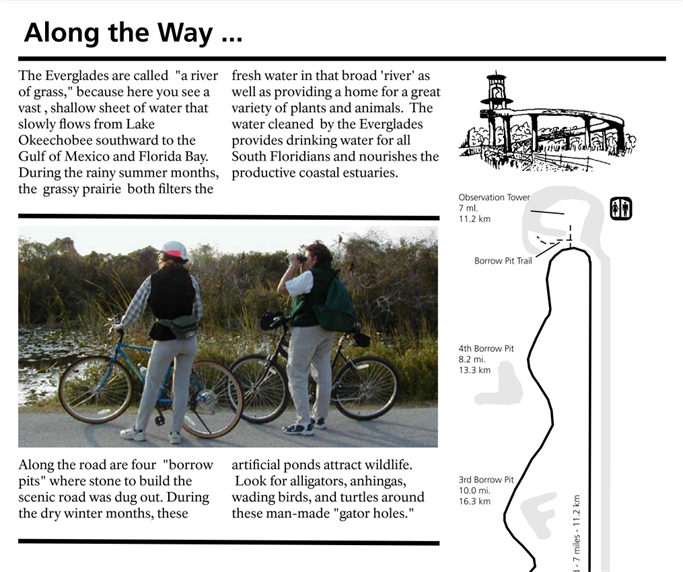Everflades NP - The Borrow Pit
One of the joys of traveling is learning a new language. Don’t misunderstand me; we travel exclusively in the United States. But in case you haven’t noticed, the people of any given place have things they say just a bit differently than others.
If you drop something in South Dakota, you don’t say, “Damn,” or even, “Whoops.” You say, “Ope.” In St. Thomas, you may have a single mongoose, but if you have more than one, it’s “mongoose dem.” The people of south Louisiana have SO MANY expressions completely unlike the people of any other region. Some are simple pronunciation differences resulting from the overlapping primary languages of the immigrant populations, but some are unique phrases (like “lagniappe,” meaning bonus or extra, or “neutral ground,” meaning the grassy median dividing a street). Most of us know the southern expression “fixin’ to,” & if someone in Arkansas says “it’s comin’ up a cloud,” then you can bet it’s fixin’ to rain. I could go on forever.
But, not so much in southern Florida. So many people here aren't really from here. Most of the folks who call lower Florida home are from New York or New Jersey, with a few from the Philadelphia area thrown into the mix, and they bring their native region's culture and expressions with them. Unless you're in the rural small towns or in the everglades, you likely will only find a handful of true Florida natives. I mean, the guy who more-or-less founded modern Florida, Henry Flagler, made his money in Standard Oil, in partnership with the ultimate New Yorker, John D. Rockefeller. In that vein, it's easy to understand how so much of Florida's identity, including a large part of its language and history, simply did not survive Florida's population explosions.
Having said all that, I now say this: The newest addition to my vernacular, by way of southern Florida, is “borrow pit.” I learned the phrase while visiting the Shark Valley Visitor Center in Everglades National Park, & once my curiosity took over, I learned so much more. To be fair, the phrase wasn’t unique to southern Florida. It is apparently known in the engineering world & still occasionally used in other parts of the lowlands throughout the coastal south. As the phrase lost popularity in other places, it took solid hold in southern Florida, & now southern Florida has made it its own.
While the southernmost section of central Florida, roughly the bottom third of Florida peninsula, wasn’t officially declared a National Park until 1947, the land was under federal control as early as 1934. In the late 1930s, in an attempt to jump-start a new industry in the state, the Florida State Legislature proposed a $50,000 one-time bonus for the first commercial oil or gas discovery in the state. The proposal was passed in 1941, & the federal government leased a hunk of the land that is now the Shark Valley section of Everglades National Park to the Humble Oil and Refining Company from Texas. The first thing the oil company had to do was gain access to the land they had leased, and the second thing was to prepare the area for exploration and drilling.
The everglades are not a swamp. Often the word “swamp” is incorrectly used as a synonym for the word “wetlands.” The everglades are a giant wetlands complete with the occasional copse of trees (called a hammock) and full of alligators, wading birds. & other varieties of life that depend on water for survival. To be fair, most people would call that a swamp. And that’s certainly what Humble Oil’s first road engineers thought when they first laid eyes on their new home away from home. They soon learned that part of what makes the everglades different from a swamp is the underlying limestone bed. Which brings us back to the borrow pits.
When Humble Oil workers originally arrived in the everglades, they had no idea what to do with this unusual topography, but they knew that to secure that $50,000 bonus, they first needed to build a road to the south, deeper into the everglades wilderness, from the existing east-west section of the Tamiami Trail. They pretty quickly deduced that draining an area for a road bed was futile, as water would just run right back in. Even with dams or barriers, keeping the road above water in the rainy season would be impossible. They pretty quickly decided that importing road-building materials such a long distance, to such a remote area, would be extremely costly. With the help of Native Americans & other locals in the region, they figured out pretty quickly that they could use the limestone that was already there, beneath the layers of vegetation & shallow water. The plan they instituted was to move some limestone from one area to another, building up a limestone road bed in one spot while creating a hole in another spot. These holes, these quarries, are called . . . borrow pits.
It's obvious to see the long, narrow, water-filled area that runs parallel to the long, narrow road at the Shark Valley Visitor Center. That road is the original road built by those Humble Oil guys well before the everglades became Everglades National Park. That narrow, water-filled area is the original borrow pit that provided the limestone for that road.
Less obvious are the other borrow pits in the Shark Valley area. I have no knowledge about the environmental impact of these quarries as they were being dug. I was told by a National Park Ranger & by the Shark Valley Tram Tour guides that the plants & creatures of the area have adapted to having deeper year-round, life-giving water in these pits during the dryer season. I was told that they are inherent to the ecosystem of this section of the everglades now. The Borrow Pit Trail spurs off the main road at Shark Valley, but it was closed during my visit because of alligator nesting in the area. These life-giving waters were literally the location of new life while I was there. Wow.
The part I like best, though, is that the stone from four of these borrow pits was quarried in such a way that the resulting deep-water ponds have a different, identifiable shape. Each of these borrow pits is shaped like a letter of our English alphabet. The four borrow pits taken together spell the word “LIFE.” I went from knowing no uniquely-Florida expressions to knowing this one phrase, the name of the very thing that facilitates such diverse life in arguably the most interesting ecosystem in the world. How cool is that?
If you drop something in South Dakota, you don’t say, “Damn,” or even, “Whoops.” You say, “Ope.” In St. Thomas, you may have a single mongoose, but if you have more than one, it’s “mongoose dem.” The people of south Louisiana have SO MANY expressions completely unlike the people of any other region. Some are simple pronunciation differences resulting from the overlapping primary languages of the immigrant populations, but some are unique phrases (like “lagniappe,” meaning bonus or extra, or “neutral ground,” meaning the grassy median dividing a street). Most of us know the southern expression “fixin’ to,” & if someone in Arkansas says “it’s comin’ up a cloud,” then you can bet it’s fixin’ to rain. I could go on forever.
But, not so much in southern Florida. So many people here aren't really from here. Most of the folks who call lower Florida home are from New York or New Jersey, with a few from the Philadelphia area thrown into the mix, and they bring their native region's culture and expressions with them. Unless you're in the rural small towns or in the everglades, you likely will only find a handful of true Florida natives. I mean, the guy who more-or-less founded modern Florida, Henry Flagler, made his money in Standard Oil, in partnership with the ultimate New Yorker, John D. Rockefeller. In that vein, it's easy to understand how so much of Florida's identity, including a large part of its language and history, simply did not survive Florida's population explosions.
Having said all that, I now say this: The newest addition to my vernacular, by way of southern Florida, is “borrow pit.” I learned the phrase while visiting the Shark Valley Visitor Center in Everglades National Park, & once my curiosity took over, I learned so much more. To be fair, the phrase wasn’t unique to southern Florida. It is apparently known in the engineering world & still occasionally used in other parts of the lowlands throughout the coastal south. As the phrase lost popularity in other places, it took solid hold in southern Florida, & now southern Florida has made it its own.
While the southernmost section of central Florida, roughly the bottom third of Florida peninsula, wasn’t officially declared a National Park until 1947, the land was under federal control as early as 1934. In the late 1930s, in an attempt to jump-start a new industry in the state, the Florida State Legislature proposed a $50,000 one-time bonus for the first commercial oil or gas discovery in the state. The proposal was passed in 1941, & the federal government leased a hunk of the land that is now the Shark Valley section of Everglades National Park to the Humble Oil and Refining Company from Texas. The first thing the oil company had to do was gain access to the land they had leased, and the second thing was to prepare the area for exploration and drilling.
The everglades are not a swamp. Often the word “swamp” is incorrectly used as a synonym for the word “wetlands.” The everglades are a giant wetlands complete with the occasional copse of trees (called a hammock) and full of alligators, wading birds. & other varieties of life that depend on water for survival. To be fair, most people would call that a swamp. And that’s certainly what Humble Oil’s first road engineers thought when they first laid eyes on their new home away from home. They soon learned that part of what makes the everglades different from a swamp is the underlying limestone bed. Which brings us back to the borrow pits.
When Humble Oil workers originally arrived in the everglades, they had no idea what to do with this unusual topography, but they knew that to secure that $50,000 bonus, they first needed to build a road to the south, deeper into the everglades wilderness, from the existing east-west section of the Tamiami Trail. They pretty quickly deduced that draining an area for a road bed was futile, as water would just run right back in. Even with dams or barriers, keeping the road above water in the rainy season would be impossible. They pretty quickly decided that importing road-building materials such a long distance, to such a remote area, would be extremely costly. With the help of Native Americans & other locals in the region, they figured out pretty quickly that they could use the limestone that was already there, beneath the layers of vegetation & shallow water. The plan they instituted was to move some limestone from one area to another, building up a limestone road bed in one spot while creating a hole in another spot. These holes, these quarries, are called . . . borrow pits.
It's obvious to see the long, narrow, water-filled area that runs parallel to the long, narrow road at the Shark Valley Visitor Center. That road is the original road built by those Humble Oil guys well before the everglades became Everglades National Park. That narrow, water-filled area is the original borrow pit that provided the limestone for that road.
Less obvious are the other borrow pits in the Shark Valley area. I have no knowledge about the environmental impact of these quarries as they were being dug. I was told by a National Park Ranger & by the Shark Valley Tram Tour guides that the plants & creatures of the area have adapted to having deeper year-round, life-giving water in these pits during the dryer season. I was told that they are inherent to the ecosystem of this section of the everglades now. The Borrow Pit Trail spurs off the main road at Shark Valley, but it was closed during my visit because of alligator nesting in the area. These life-giving waters were literally the location of new life while I was there. Wow.
The part I like best, though, is that the stone from four of these borrow pits was quarried in such a way that the resulting deep-water ponds have a different, identifiable shape. Each of these borrow pits is shaped like a letter of our English alphabet. The four borrow pits taken together spell the word “LIFE.” I went from knowing no uniquely-Florida expressions to knowing this one phrase, the name of the very thing that facilitates such diverse life in arguably the most interesting ecosystem in the world. How cool is that?





